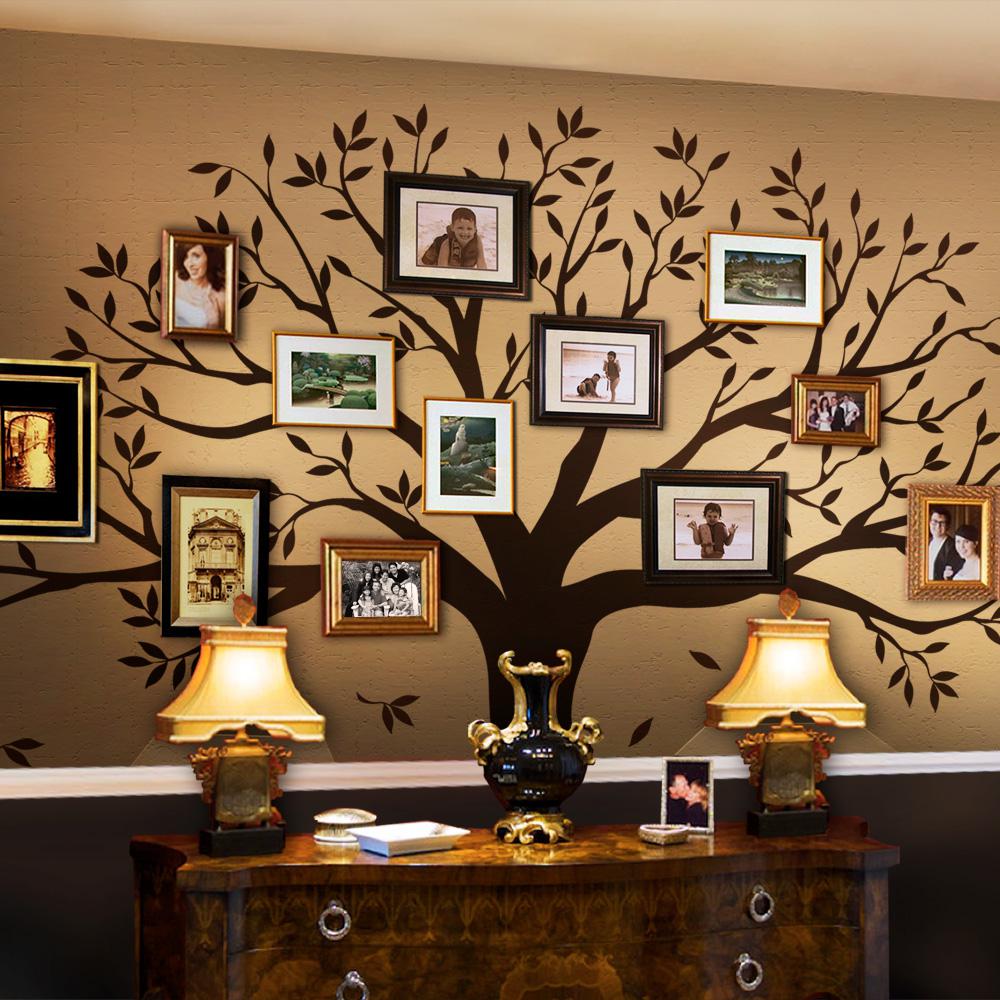Living room in oriental style
When someone says that they are going to furnish their living room in an oriental style, the question immediately arises - which one? What is meant by this term? After all, the East includes not only Arab countries, but also China, India, Japan, Korea... I think there is no need to continue the list, let’s dwell on some of the listed options and figure out what it should look like.
The content of the article
General features of oriental interiors
Before moving on to the details, let's see what all oriental-style interiors have in common, no matter what country they belong to. Let's start with the color palettes used.
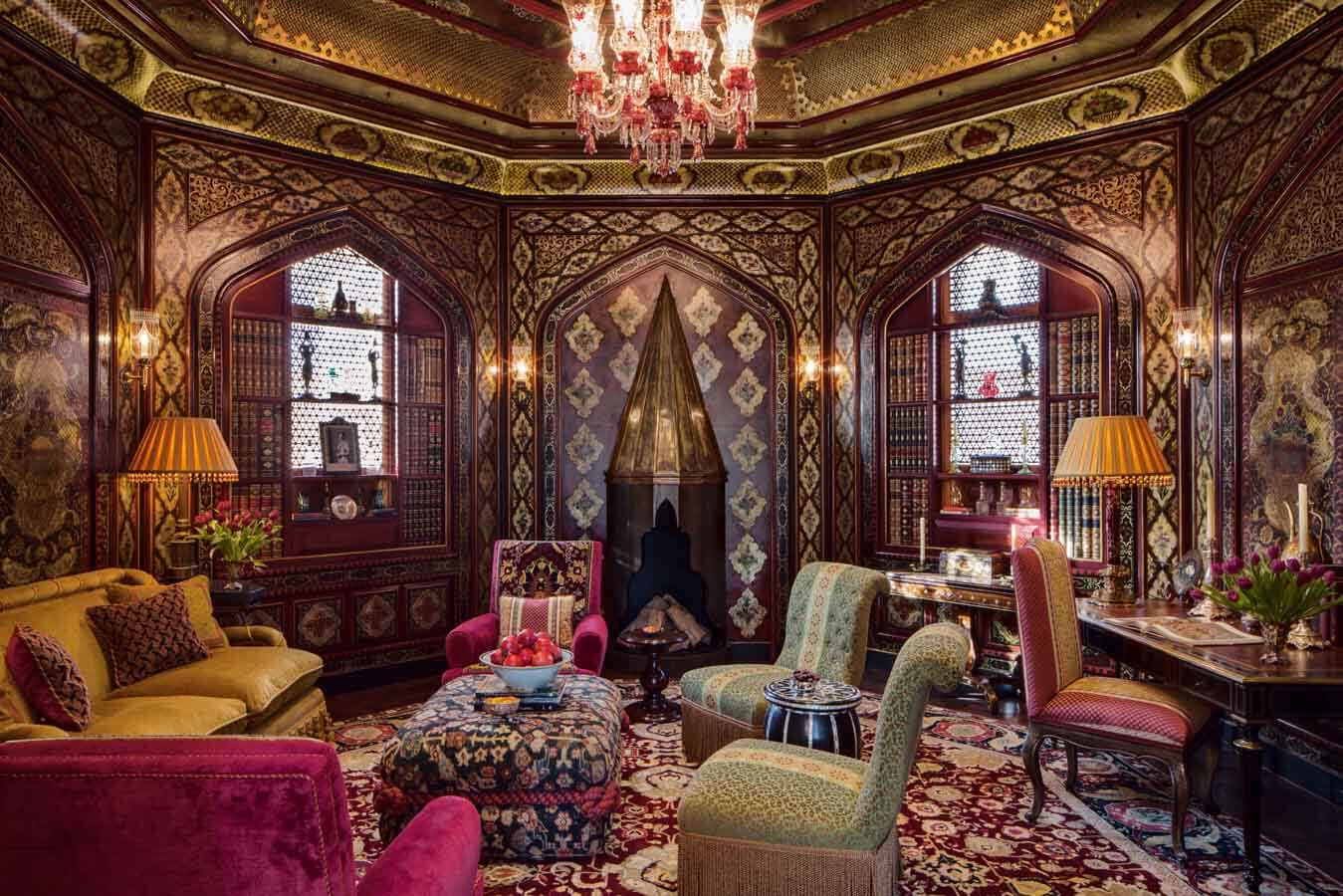
Shades
Firstly, despite the fact that the oriental style is inherent rich, bright colors, you won't see any neon-acid shades there. All colors used found in nature and therefore calm the gaze:
- wood colors (in all their diversity), ocher, terracotta, shades of brown;
- natural shades of green - emerald, olive, malachite, grassy colors;
- orange, yellow, honey, golden;
- burgundy, scarlet and ruby tones.
Despite the richness of the range, the colors are selected so that a person can rest his body and soul in the surrounding environment.
Materials
In the normal understanding of the oriental interior of a living room, or any other room, they use natural materials. If we are talking about floors, then wood or tiles are used.No PVC laminates with imitation stone or wood textures. Sofas - covered with brocade, silk, leather, but not made of leatherette. And the linings on them, as well as all the furniture - made of natural wood. Chipboard, even laminated, is somehow not quite oriental. The walls are finished with decorative plaster with patterns, stucco, or covered with wallpaper made from natural materials with ornaments.
Details
Another characteristic feature is an abundance of mats, mats, carpets and small rugs in the interior, in different colors and styles, depending on which Eastern country the focus is on.
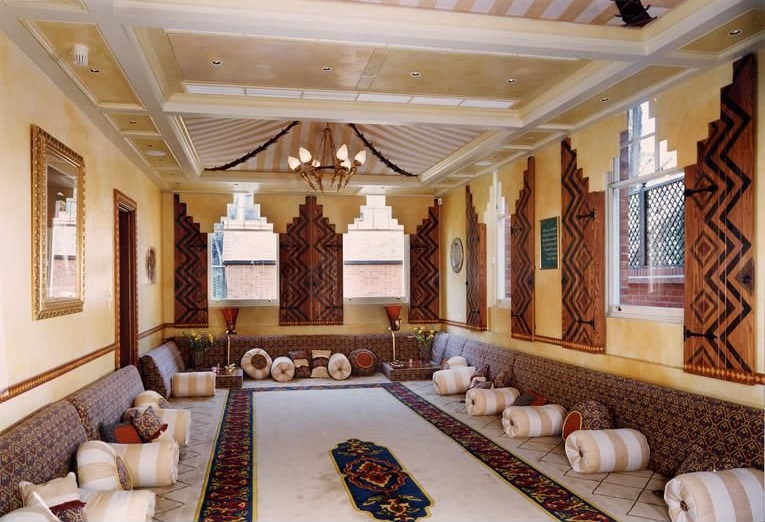
Regarding openings, doors, windows and ceilings, we will highlight our own nuances in each case.
Well, now let's move from the general to the specific.
Arabic style
Perhaps, the closest to our understanding of beauty (we have always held luxury in high esteem) will be the Arabic version of the interior design of the living room.
Traditionally, in a “proper” Arab living room one of the doors leads to the garden located in the courtyard - a kind of piece of heaven. Didn't work out with the yard? Well, we will be inconsolable about this. But who is stopping you from organizing an exit to the balcony in the same style? small greenhouse? In extreme cases, they will help us out photo wallpaper depicting the same garden on the wall around the doorway. Not quite, of course, in the spirit of The Thousand and One Nights, but not bad either.
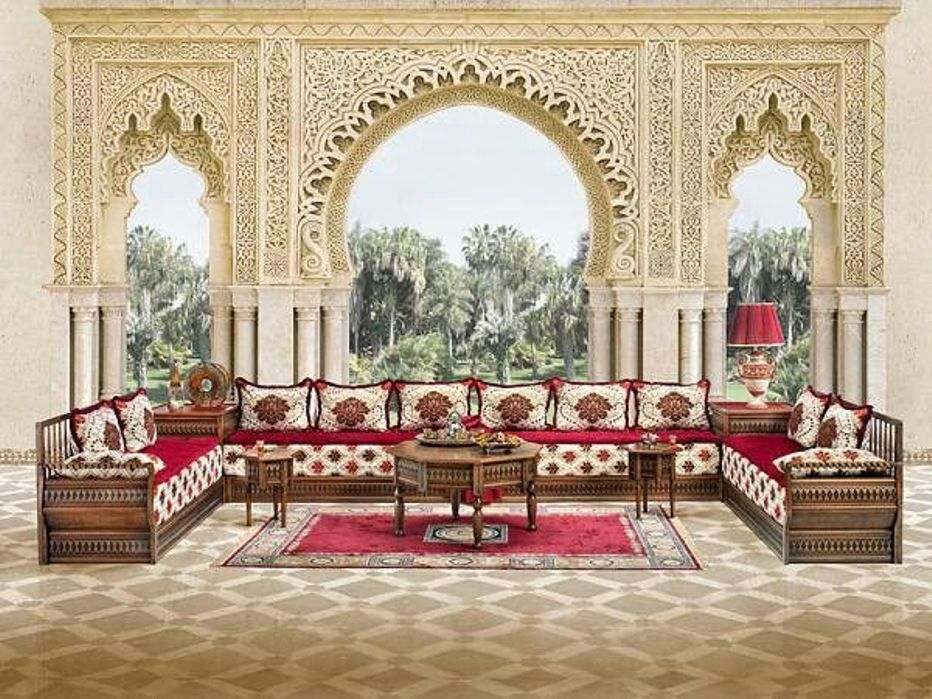
Ceilings in the Arabic style are usually designed in the form dome or pointed vault. If the design of the room does not allow this, plasterboard in several levels may well serve as a replacement for the dome. It is quite oriental style to hang a drapery with fancy patterns on the ceiling around the chandelier.If the ceiling is snow-white, you can add stucco elements to its design, and in the center of the living room - a huge bronze chandelier on a massive chain.
Regarding the walls - they are decorated either snow-white, with false columns and stucco, or in golden brown tones. Fits perfectly into the interior carved wooden panels (or ceramic) with oval, round, without right angles shapes. In general, right angles predominate in the Japanese version of living rooms, but we will talk about it separately.
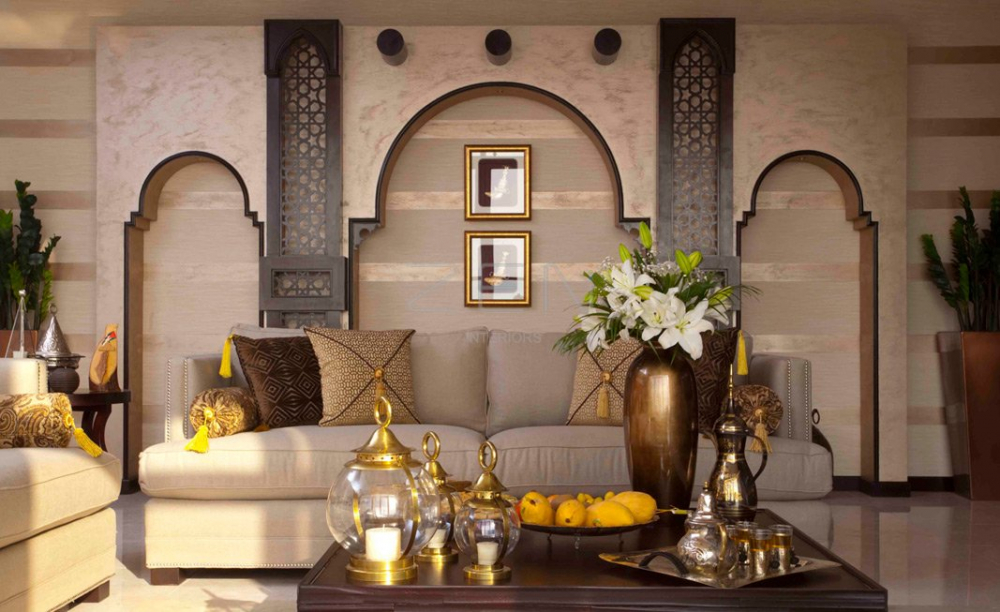
Often present on the floor carpet made of natural materials (silk or wool), slightly darker in tone than the walls, with intricate patterns on it. They try to make the openings dome-shaped or pointed, if the dimensions of the apartment and funds allow. Often, instead of doors, the same carpets or light curtains appear. This is done not only as a tribute to style - arched carpentry is difficult to manufacture and costs much more than classic rectangular carpentry.
For sofa characterized by smooth outlines without sharply defined angles, the presence of many cushions and soft armrests. All this luxury is upholstered in expensive drapery in soothing colors. This sofa, like a magnet, installed in the very center of the living room, invites you to spend idle time.
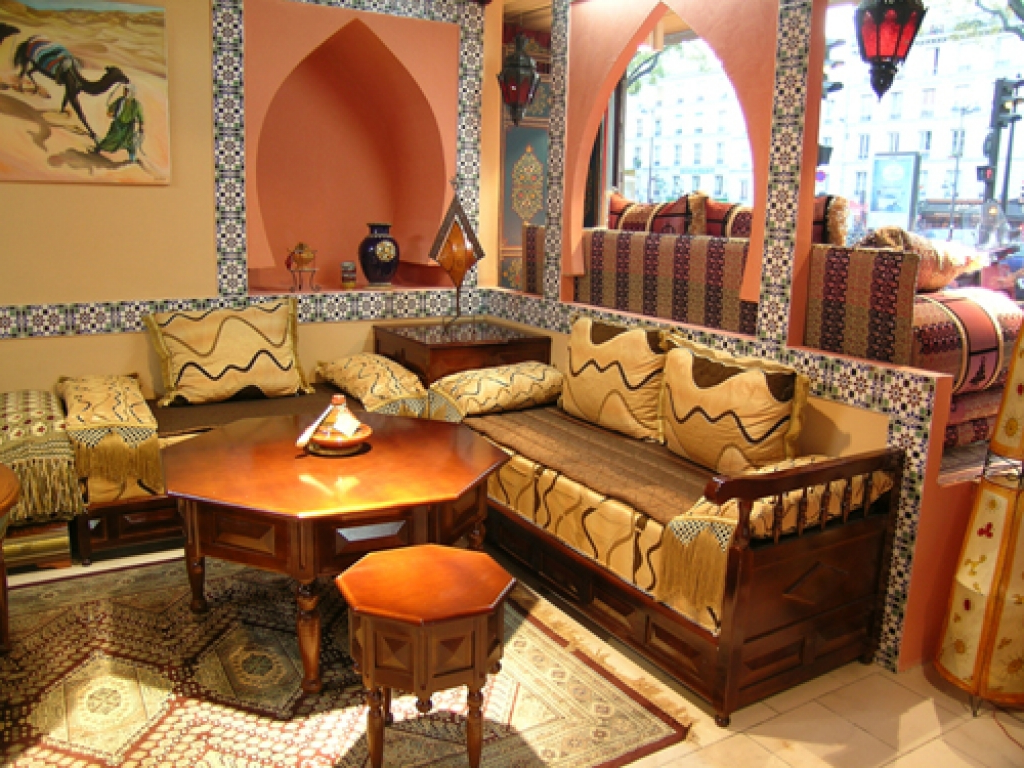
The furniture - table and seats - is low and solid, with natural upholstery in colors that fit into the interior. A common piece of furniture in Arabic living rooms is a properly dressed hookah, around which seat cushions are comfortably located.
If there are bars on the windows, then they are made of figured forging, and the dishes in the living room are antique, made of silver and bronze.
In short, it will be easier look at the photo and grasp for yourself the essence of decorating living rooms in the Arabic style. I read - I forgot, I saw - I remembered.
Living room in Japanese and Chinese style
In contrast to Arabian luxury, Japan and China are more characterized by restraint and simplicity in their decor. If possible, the room is not cluttered with unnecessary details. This feature is connected, firstly, with traditional small size of Asian dwellings. The second reason - ideological, associated with the teachings of the circulation of Qi energy. The Chinese have a whole science about this, what should be where – it’s called Feng Shui. But we won’t dig that deep, we’re not Chinese.
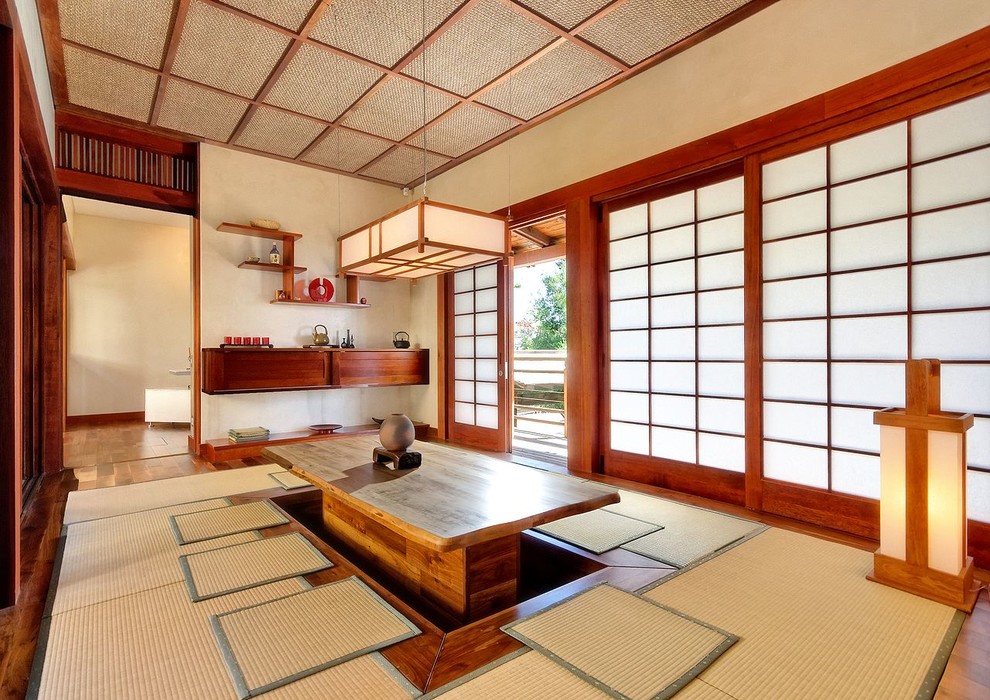
The color scheme in the room is usually light, with a predominance of white, sand, light green and beige natural shades. If you decorate an already small living room in dark colors, it will visually become even smaller.
Walls are characterized by wallpaper with the image of bamboo or stylized as rice paper. Sometimes the walls are covered with rectangular wooden panels. There is also painted plaster with paintings in an oriental style. If painting in the form of hieroglyphs, bother to find out what the writing on the wall means. Otherwise, some orientalist will definitely make a sarcastic comment about this.
Paintings in the form of Mount Fuji, images of birds, vegetation (usually cherry blossoms), Japanese women in traditional attire.
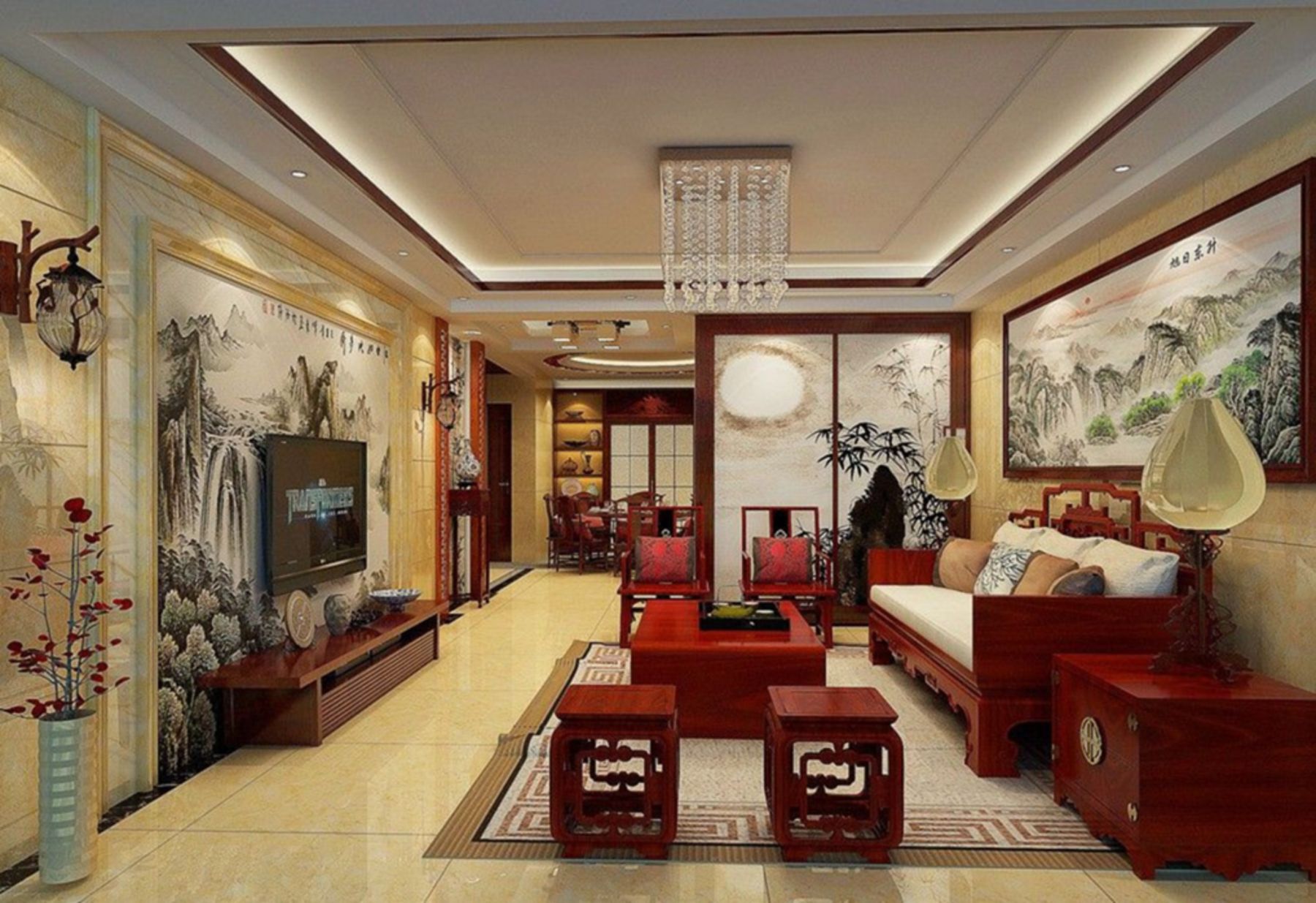
To create contrast, the floors are made a shade darker than the walls. Seeing completely dark floors in such rooms is rather an exception to the rule. As usual, a laminate with a wood texture in beige shades or a bamboo board is used. To enhance the ambience, sometimes pebble paths made from flat river pebbles are laid out right on the floor of the living room.
Ceilings are mostly equipped with the following:
- snow-white, matte, perfectly smooth;
- with photo wallpaper of blue sky with clouds or covered with a network of paintings and hieroglyphs;
- with rectangular wooden beam lattice, sometimes it is covered with figured carvings.
The ceiling design is designed so that it appears to be a continuation of the walls, and does not hang over the heads of the inhabitants and guests of the home.
A mandatory attribute of the interior is small rectangular table for tea ceremonies. Well, what are Japanese-style gatherings without it?
Japanese and Chinese living room decoration have a lot in common. Key difference - in the selection of colors. The Japanese hold it in high esteem white, green and black colors in the interior. The Chinese have red, golden or yellow. As a rule, more than three colors are not used at the same time when decorating the decor.
Another characteristic feature is zoning rooms using rice paper screens. This solution comes in handy in studio rooms. Such a screen can serve both as curtains and as a folding door. Its advantage is that it transmits light, and with skillful decoration it looks amazing.
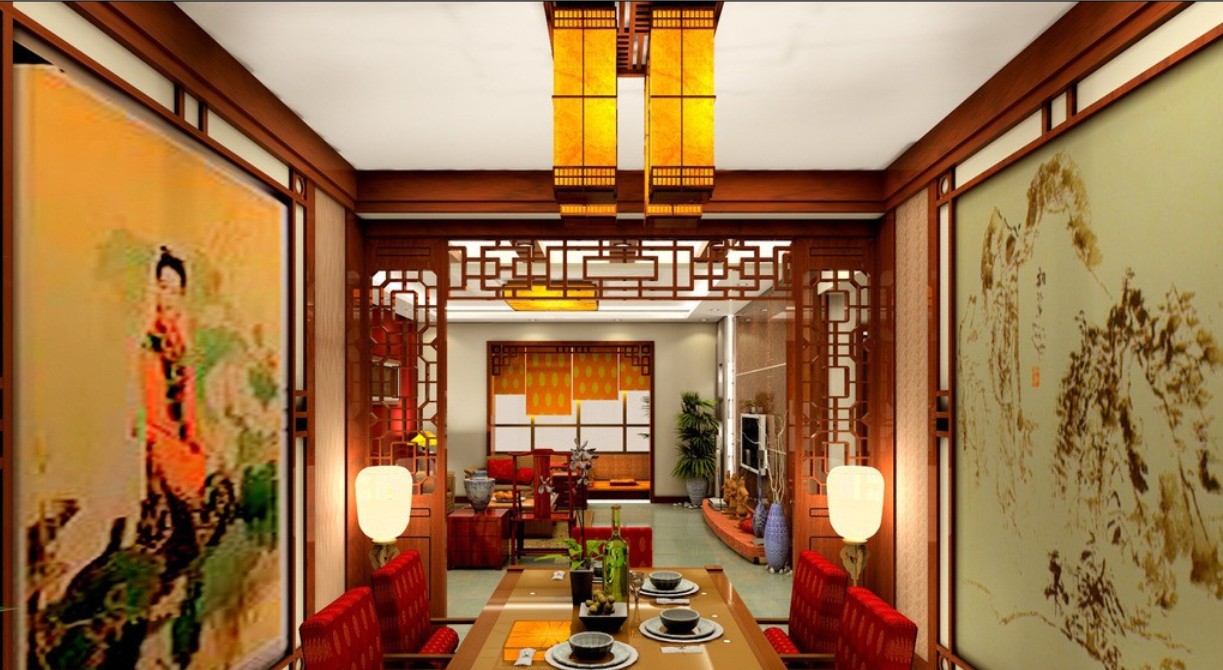
Furniture in the Japanese version is squat, with simple, reliable legs of regular geometric shapes. For its production they are used simple natural materials - wood, wicker, metal, textiles.
Quantity decorative elements kept to a minimum - china, paired figurines, paper lampshades, a rock garden in a rectangular box, and perhaps a samurai sword and armor (or imitation) on the wall.
In general, if we compare Chinese, Korean and Japanese living rooms, the wisdom that has come to us through the dust of centuries comes to mind: “A samurai without a sword is like a samurai with a sword.But only without a sword." They seem similar to each other, but still different.
It can be long and tedious to rant about decorating a hallway in Indian, Korean, Indonesian, Vietnamese, Ceylon or any other style. It’s easier to google it and look at the photo with your own eyes to see what it looks like.




